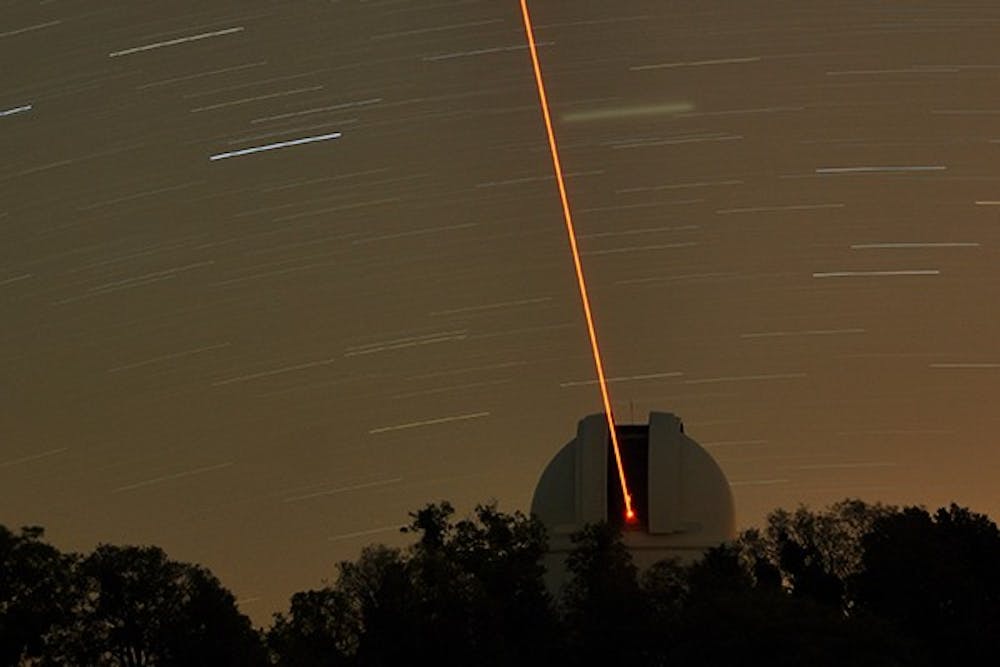A new robotic laser technology could change that.
Physics professor Nicholas Law worked on the Robo-AO, a 60-inch telescope that uses a robotic laser to clarify images of outer space, at the California Institute of Technology for the past five years.
The Robo-AO uses special technology to automatically observe celestial objects. Other telescopes require astronomers to spend time differentiating between real objects and visual static. Law hopes to install this Robo-AO-like system in UNC’s South American telescope soon.
Carl Ziegler , a second-year graduate student at UNC, worked remotely on the Robo-AO project by reviewing observations of NASA’s Kepler satellite . While he didn’t get to see the system in person, he said he is excited to bring the technology to UNC’s telescope.
“We are going to build a new adaptive optics system, much like the Robo-AO system on the telescope,” Ziegler said. “That means we can have very high efficiency surveys with it. We can look at many more objects than a traditional adaptive optics system.”
Christoph Baranec , a professor at the University of Hawaii and Robo-AO’s principal investigator, said the technology replaces the need for people to operate the telescope and adaptive optics system and track airplanes in the laser’s path.
“What we’ve done that’s new and innovative is that we’ve fully automated the entire process,” Baranec said.
Baranec, Law and Reed Riddle , a programmer at the Palomar Observatory, said they did about 90 percent of the project’s work but enlisted the help of undergraduate and graduate students.




